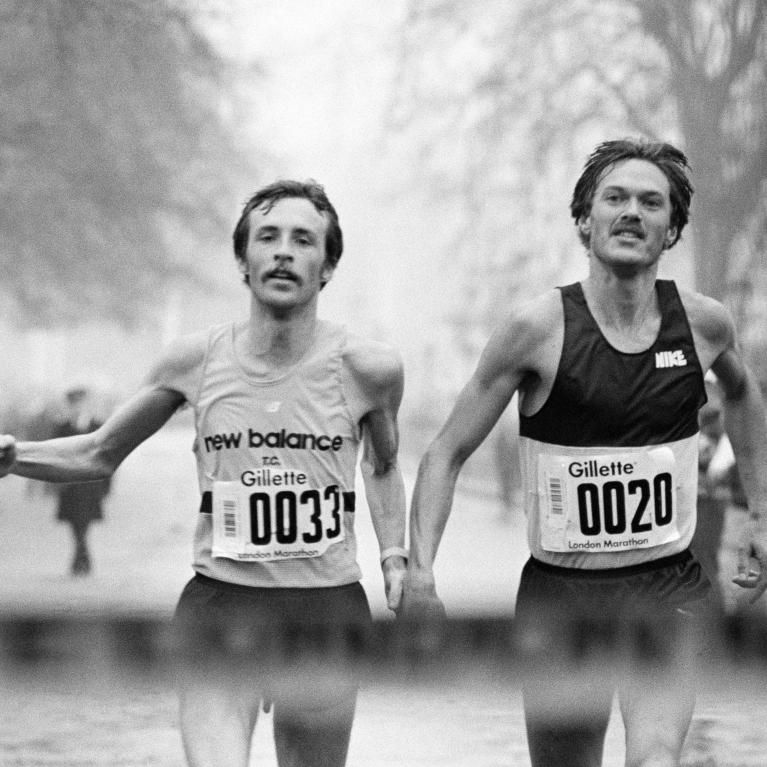
On Sunday 29 March 1981 the first London Marathon took place in the British capital, as 7,055 people set off from Blackheath to take on a route that finished on Constitution Hill.
As the participants started on that damp and drizzly morning, they could not have known their 26.2-mile challenge would become the world’s most popular marathon.
In 1979 Chris Brasher, a journalist and former Olympic steeplechase champion, took part in the New York City Marathon. On his return to the UK, he declared feeling inspired at being “part of the greatest folk festival the world had seen”.
Brasher shared his enthusiasm for the event in the pages of The Observer newspaper, where he asked: “I wonder whether London could stage such a festival? We have the course… but do we have the heart and hospitality to welcome the world?”
Not one to wait for an answer, Brasher went on, less than 18 months later, to co-found the London Marathon with his friend, John Disley. His questions were answered affirmatively and gloriously, time and time again.
Anyone tuning in to the BBC coverage on that morning in March 1981 would have heard commentator David Coleman, the original voice of the event, say: “This London Marathon, even before it’s started, is surely the most remarkable success,” as a cannon sounded to set the participants on their way.
Coleman was right: it truly was the start of something big. The London Marathon has not only gone on to become Britain’s greatest annual sports festival, but also a global celebration of elite excellence, a carnival of fun, fundraising and fancy-dress fabulousness, and the most uplifting mass demonstration of the human spirit.
It has also delivered on Brasher’s and Disley’s original aim to help participants “have fun and provide some happiness and sense of achievement in a troubled world” – a pillar of the event that’s just as important today as it was in 1981.
While everyone who took part on that dreary day 44 years ago should be celebrated, the men’s champions will forever be remembered for their hand-in-hand finish.
When American Dick Beardsley and Norway’s Inge Simonsen crossed the Finish Line together as joint winners of the inaugural event, they created the first truly great image of London Marathon spirit (pictured above). It remains one of the event’s most powerful moments to this day.
It nearly never happened, as both runners tried to break each other, until Beardsley suggested they share a symbolic victory and Simonsen thought, ‘Why not?’ (even though he now laughs, “I never thought about doing that before or since!”).
Their shared triumph granted them a unique form of sporting immortality, one that a solo victory could never have achieved – and set the tone and spirit of every London Marathon that followed.
While their joint win in 1981 made them household names and captured the world’s attention, they weren’t the only pair at the event to finish together: the last two finishers also crossed the line hand-in-hand. Parisian Marie Dominique de Groot and Londoner David Gaiman finished in joint 6,254th place.
Fast-forward to 2025, and the London Marathon has never been more popular. A world record 840,318 people entered the ballot for the event, and on Sunday 27 April 2025 thousands of participants will go for another Guinness World Record, as the event aims to become the biggest marathon ever.
Don’t miss a moment of the action: follow @LondonMarathon on social media channels and watch all the coverage from the 45th edition live on the BBC on Sunday 27 April.